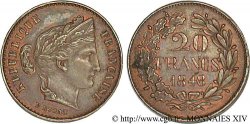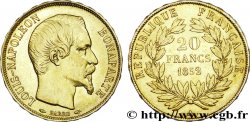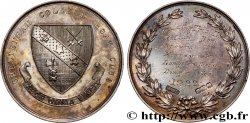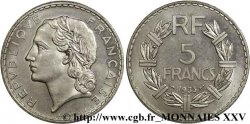- Accueil
- >
- >
Live auction - fmd_951408 - Concours de 5 francs, essai en étain par Alard 1848 Paris Maz.1265 c
Чтобы принять участие в торгах, вы должны войти в систему и стать подтвержденным участником аукциона. Войдите, чтобы сделать ставку. Ваш аккаунт будет подтвержден в течение 48 часов. Не ждите до закрытия торгов, чтобы зарегистрироваться.Сделав ставку на данный товар, вы вступаете в юридическое соглашение на покупку выбранного товара и нажатием кнопки «Сделать ставку» подтверждаете принятие вами условий интернет-аукционов cgb.fr.
Ставка может бить сделана только в полном эквиваленте евро. Торги закроются согласно времени, указанному в описании товара, все ставки, сделанные после закрытия торгов, учитываться не будут. Не следует откладывать предложение вашей ставки до последнего момента, так как система может не успеть обработать вашу заявку, и ваша ставка не будет принята. Более детальную информацию вы найдёте здесь: FAQ по интернет-аукционам.
Все ставки победителей подлежат комиссии 18%.
Все ставки победителей подлежат комиссии 18%.
| Оценить : | 300 € |
| Цена : | 195 € |
| Максимальная предлагаемая цена : | 205 € |
| Конец торгов : | 13 May 2025 17:06:56 |
| Участников : | 4 Участников |
Тип Concours de 5 francs, essai en étain par Alard
Дата: 1848
Монетный двор / Город: Paris
Количество отчеканенных монет: ---
Металл: tin
Диаметр: 37 mm
Ориентация осей монеты: 6 h.
Вес: 17,31 g.
Век: lisse
Редкость: R1
Лицевая сторона
Аверс: легенда: REPUBLIQUE - FRANÇAISE.
Аверс: описание: Buste casqué de la République à gauche surmontée d'un coq ; signature cursive F. Alard au-dessous.
Обратная сторона
Реверс: легенда: LIBERTÉ ÉGALITÉ FRATERNITÉ.
Реверс: Описание: 5/ FRANCS/ 1848 en trois lignes dans une couronne formée d’une branche de chêne et d’une branche d’olivier.
Комментарий
Le 24 février 1848, après l'abdication de Louis-Philippe en faveur de son petit fils, la République est proclamée avec une rapidité étonnante. Les fabrications monétaires reprennent les anciens types de Dupré, à l'Hercule pour les 5 francs dont les fabrications commencent le 19 mars et au Génie pour les 20 francs dont les fabrications commencent le 12 mai. Le 3 mai, le nouveau gouvernement, élu en avril, décrète la création de nouveaux types pour les monnaies. Le même jour un concours est organisé pour la gravure des coins des nouvelles espèces. Trente et un artistes participent au concours : Alard, Barre, Boivin, Borrel, Bouchon, Bouvet, Bovy, Catel, Caunois, Dantzell, Desbœufs, Dieudonné, Domard, Farochon, Fauque, Gayrard, Leclerc, Magniadas, Malbet, Marrel, Merley, Montagny, Moullé, Oudiné, Pillard, Pingret, Reynaud (termina après la date de clôture), Rogat, Tournier, Vauthier-Galle et Vivier. Tandis que certains ne se présentent que pour un type (Bouchon ou Caunois pour l'argent par exemple), d'autres artistes participent pour les trois métaux (Boivin, Dieudonné ou Oudiné par exemple), et d'autres présentent des épreuves multiples (deux dans chaque métal pour Montagny, quatre en bronze pour Rogat, sept en tout pour Gayrard). Les prix sont obtenus par Merley pour l'or, Oudiné pour l'argent et Domard pour le cuivre. Barre et Oudiné obtiennent un accessit pour l'or, Barre et Domard obtiennent un accessit pour l'argent, Barre et Oudiné obtiennent un accessit pour le cuivre.
On February 24, 1848, after the abdication of Louis-Philippe in favor of his grandson, the Republic was proclaimed with astonishing speed.. The coin productions resume the old Dupré types, with the Hercules for the 5 francs whose production begins on March 19 and the Génie for the 20 francs whose production begins on May 12.. On May 3, the new government, elected in April, decreed the creation of new types of coins.. On the same day a competition is organized for the engraving of the dies of the new species. Thirty-one artists participated in the competition: Alard, Barre, Boivin, Borrel, Bouchon, Bouvet, Bovy, Catel, Caunois, Dantzell, Desboeufs, Dieudonné, Domard, Farochon, Fauque, Gayrard, Leclerc, Magniadas, Malbet, Marrel, Merley, Montagny, Moullé, Oudiné, Pillard, Pingret, Reynaud (ended after the closing date), Rogat, Tournier, Vauthier-Galle and Vivier. While some only present themselves for one type (Bouchon or Caunois for silver for example), other artists participate for all three metals (Boivin, Dieudonné or Oudiné for example), and others present multiple proofs (two in each metal for Montagny, four in bronze for Rogat, seven in all for Gayrard). Prices are obtained by Merley for gold, Oudiné for silver and Domard for copper. Barre and Oudiné get a gold medal, Barre and Domard get a silver medal, Barre and Oudiné get a copper medal
On February 24, 1848, after the abdication of Louis-Philippe in favor of his grandson, the Republic was proclaimed with astonishing speed.. The coin productions resume the old Dupré types, with the Hercules for the 5 francs whose production begins on March 19 and the Génie for the 20 francs whose production begins on May 12.. On May 3, the new government, elected in April, decreed the creation of new types of coins.. On the same day a competition is organized for the engraving of the dies of the new species. Thirty-one artists participated in the competition: Alard, Barre, Boivin, Borrel, Bouchon, Bouvet, Bovy, Catel, Caunois, Dantzell, Desboeufs, Dieudonné, Domard, Farochon, Fauque, Gayrard, Leclerc, Magniadas, Malbet, Marrel, Merley, Montagny, Moullé, Oudiné, Pillard, Pingret, Reynaud (ended after the closing date), Rogat, Tournier, Vauthier-Galle and Vivier. While some only present themselves for one type (Bouchon or Caunois for silver for example), other artists participate for all three metals (Boivin, Dieudonné or Oudiné for example), and others present multiple proofs (two in each metal for Montagny, four in bronze for Rogat, seven in all for Gayrard). Prices are obtained by Merley for gold, Oudiné for silver and Domard for copper. Barre and Oudiné get a gold medal, Barre and Domard get a silver medal, Barre and Oudiné get a copper medal









 Cообщить об ошибке
Cообщить об ошибке Распечатать страницу
Распечатать страницу Отправить мой выбор
Отправить мой выбор Задать вопрос
Задать вопрос Consign / sell
Consign / sell
 Информация
Информация













